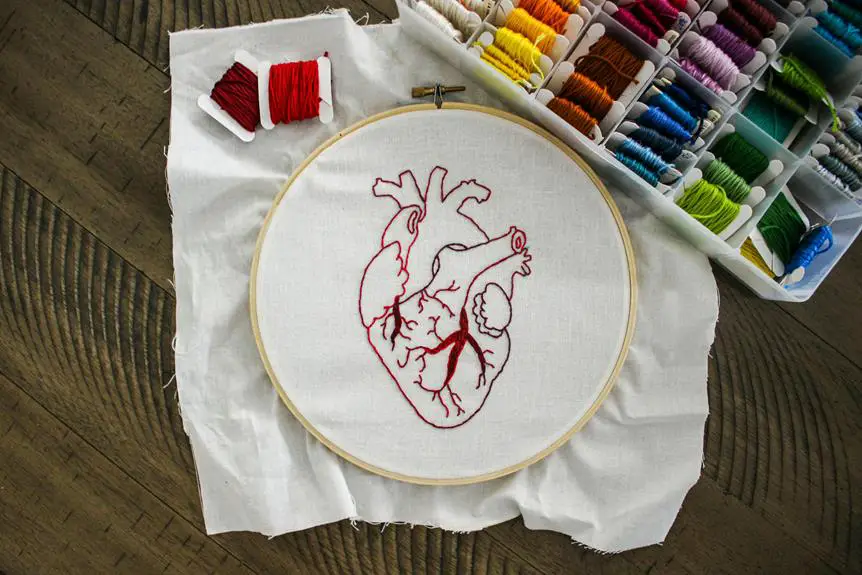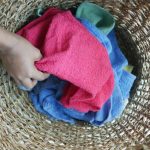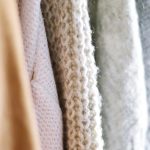When it comes to knit fabrics, you're likely familiar with the pros and cons of each type. French terry, for instance, is soft and breathable, but how does it hold up against other popular knit fabrics like jersey, interlock, and rib knit? You might be surprised to learn that French terry is more durable than some of its lightweight counterparts, but falls short in terms of resistance to abrasion. As you weigh the benefits of each fabric type, you'll want to consider how they'll perform under different conditions. But first, let's take a closer look at what sets French terry apart.
Table of Contents
Understanding French Terry Fabric
French terry is a specific type of knit fabric that has a unique texture and construction.
It's made using a specific weaving technique that creates a soft, absorbent, and breathable fabric. When you look closely at French terry, you'll notice that it has a series of small loops on one side and a smooth surface on the other.
These loops are what give French terry its signature texture and make it so comfortable to wear. They also help to trap warm air and keep you cozy, making French terry a popular choice for clothing like sweatshirts and sweatpants.
Unlike other knit fabrics, French terry is often made from cotton or a cotton-blend yarn, which gives it a natural softness and durability. Overall, French terry's unique construction and texture make it a versatile and practical choice for a wide range of applications.
Characteristics of Fleece Fabric
When it comes to fleece fabric, its characteristics are distinct from those of French terry, with a thick, plush pile that traps warm air and provides excellent insulation. You'll notice that fleece fabric is often used in activewear and outdoor gear because of its ability to retain warmth without being too heavy. The fabric's thickness and density also make it resistant to wind and cold temperatures.
- Softness: Fleece fabric is incredibly soft to the touch, making it a pleasure to wear against your skin.
- Breathability: Despite its thickness, fleece fabric allows for airflow and moisture transfer, which helps prevent overheating.
- Quick-drying: Fleece fabric is designed to dry quickly, making it ideal for activewear and outdoor activities.
- Shrinkage: Fleece fabric can shrink significantly if not washed and dried properly, so be sure to follow care instructions carefully.
Durability of Jersey Knit Fabric
When evaluating the durability of jersey knit fabric, you'll want to examine the common areas where it tends to weaken, such as seams and stress points.
You'll also consider the threads per inch (TPI), as a higher TPI count typically indicates a stronger fabric.
Common Fabric Weakening Spots
One of the most common fabric weakening spots in jersey knit fabric is the seam, where the knit stitches are disrupted by the sewing process, making it more prone to tears and runs.
When you sew two pieces of jersey knit fabric together, the needle and thread can cause micro-tears in the fabric, weakening its overall structure. This is especially true if the seam is subjected to stress or stretching.
Hemlines: The fold where the hem meets the main fabric can be a weak spot, especially if the hem is narrow or not properly secured.
Cuffs and waistbands: Areas where the fabric is folded and sewn can be prone to fraying and weakening.
Buttonholes and snaps: The stress of repeated use can cause the fabric around these openings to weaken and tear.
Stress points: Areas where the fabric is stretched or pulled, such as the armpits or knees, can be more prone to weakening and tears.
Threads per Inch
To gauge the durability of jersey knit fabric, you can start by examining its threads per inch (TPI), a measure of how tightly the fabric is woven. The higher the TPI, the more threads are packed into a square inch of fabric, which generally indicates a stronger and more durable fabric.
When checking the TPI of jersey knit fabric, you'll typically find that it ranges from 150 to 250 threads per inch. A higher TPI fabric will be less prone to pilling, snagging, and runs, making it a good choice for garments that will see heavy wear.
When comparing the TPI of different jersey knit fabrics, you may notice that some have a significantly higher thread count than others. This is often due to the type of yarn used, with thicker yarns resulting in a lower TPI and thinner yarns resulting in a higher TPI.
You can also expect to see variations in TPI depending on the intended use of the fabric. For example, a jersey knit fabric designed for activewear may have a higher TPI than one designed for casual wear.
Weight Loss Over Time
As you wear and wash your jersey knit garments over time, you'll likely notice a gradual loss of weight and density, which can significantly impact their overall durability and performance. This weight loss can be attributed to the breakdown of fibers, particularly cotton, which can shrink and weaken with repeated washing and wear.
- Fiber type: Cotton fibers, in particular, are prone to shrinkage and weakening with repeated washing and wear, leading to a loss of weight and density.
- Washing frequency: The more you wash your jersey knit garments, the more fibers will break down, leading to weight loss.
- Drying methods: Machine drying can cause fibers to shrink and weaken, while air drying can help preserve the fabric's natural texture and weight.
- Fabric blend: Jersey knit fabrics with a high percentage of synthetic fibers may be less prone to weight loss over time, as these fibers are generally more durable than natural fibers.
Comparing Interlock Knit Fabric
Interlock knit fabric has a more stable weave compared to French terry, making it less prone to curling or fraying at the edges. This is because interlock knit fabric is made with two layers of interconnected loops, creating a more secure and durable fabric.
When you compare it to French terry, you'll see that interlock knit fabric has a softer and more pliable texture, making it ideal for garments that require a bit of stretch.
In terms of durability, interlock knit fabric holds up well against wear and tear. It can withstand repeated washing and drying without losing its shape or developing unsightly holes.
However, it's worth noting that interlock knit fabric can be more prone to pilling than French terry, especially if it's made from a blend of synthetic fibers.
Despite this, interlock knit fabric remains a popular choice for activewear and casual clothing due to its comfort, flexibility, and durability. Overall, interlock knit fabric offers a great balance of performance and aesthetics, making it a viable alternative to French terry.
Rib Knit Fabric Performance
As you evaluate rib knit fabric for your next project, you'll want to consider its performance in two key areas: stretch and recovery, and abrasion resistance.
How well does the fabric snap back into shape after stretching, and can it withstand repeated wear and tear?
Stretch and Recovery
When it comes to evaluating rib knit fabric performance, its ability to stretch and recover is crucial, especially since this property directly impacts the garment's fit and overall wear. You want a fabric that can stretch to accommodate your movements, but also recover quickly to maintain its shape. Rib knit fabrics are known for their excellent stretch and recovery properties, making them ideal for garments that require a snug fit, such as activewear and hosiery.
- Elasticity: Rib knit fabrics can stretch up to 2-3 times their original length, depending on the type of yarn used and the knitting technique.
- Recovery time: The time it takes for the fabric to recover to its original shape after stretching is critical. Look for fabrics with a quick recovery time to prevent sagging or loss of shape.
- Stretch retention: The ability of the fabric to retain its stretch over time is also important. A fabric that loses its stretch quickly may not provide the desired fit.
- Yarn type: The type of yarn used can significantly impact the stretch and recovery properties of the fabric. For example, fabrics made with spandex or elastane yarns tend to have better stretch and recovery than those made with cotton or polyester yarns.
Abrasion Resistance
Now that we've explored the importance of stretch and recovery in rib knit fabrics, let's examine how they hold up to wear and tear, starting with their abrasion resistance, which is critical for determining the fabric's overall durability and lifespan.
When you subject rib knit fabrics to friction and rubbing, how well do they resist damage? The answer lies in the fabric's construction and fiber content. Rib knit fabrics with a high percentage of synthetic fibers, such as polyester or nylon, tend to perform better in abrasion resistance tests than those with natural fibers like cotton or wool.
This is because synthetic fibers are generally more resistant to pilling and fraying, which are common causes of wear and tear. On the other hand, fabrics with a blend of natural and synthetic fibers may offer a compromise between abrasion resistance and softness.
If you plan to use your rib knit fabric for an application that will be subject to heavy wear and tear, such as activewear or upholstery, look for fabrics with a high synthetic fiber content. However, if you prioritize softness and breathability, a blend of natural and synthetic fibers may be a better choice.
Factors Affecting Fabric Durability
Several key factors can significantly impact the durability of your knit fabrics, including French terry. As you work with different types of knit fabrics, it's essential to consider these factors to ensure you're getting the most out of your materials.
When evaluating the durability of your knit fabrics, you'll want to consider the following key factors:
- Fiber content: The type of fibers used in your knit fabric can greatly impact its durability. Natural fibers like cotton and wool tend to be more durable than synthetic fibers like polyester and nylon.
- Weave density: A tighter weave can make your knit fabric more resistant to wear and tear, while a looser weave can make it more prone to snagging and running.
- Finishing treatments: Specialized finishing treatments, such as wrinkle resistance or stain repellency, can impact the durability of your knit fabric.
- Care and maintenance: How you care for your knit fabric can significantly impact its durability. Following proper washing and drying instructions can help extend the life of your fabric.
French Terry Vs Other Knits
Considering French terry alongside other types of knit fabrics helps put its unique qualities and shortcomings into sharper relief, giving you a more comprehensive understanding of this fabric. When you compare French terry to other popular knit fabrics, you'll notice some key differences. Here's a brief rundown:
| Fabric Type | Durability Characteristics |
|---|---|
| French Terry | Soft, absorbent, and prone to pilling, but can withstand moderate wear and tear |
| Jersey Knit | Lightweight, breathable, and quick-drying, but may lose shape or develop holes over time |
| Interlock Knit | Smooth, stable, and resistant to pilling, but can be less breathable and more prone to snagging |
As you can see, each fabric type has its strengths and weaknesses. French terry excels in terms of softness and absorbency, but may not be the best choice for high-wear applications. Jersey knit, on the other hand, is great for activewear, but may not hold up as well to repeated washing and wear. Interlock knit offers a good balance of durability and stability, but may not be as comfortable against the skin. By understanding these differences, you can make informed decisions about which fabric to choose for your next project.
Frequently Asked Questions
Can French Terry Be Used for Outdoor Clothing?
If you're considering using French terry for outdoor clothing, it's a great choice! You can make durable outdoor garments like hoodies, sweatpants, or jackets that'll withstand rough weather conditions and regular wear.
How Does French Terry Shrink in the Wash?
You'll find that French terry shrinks about 3-5% in the wash, depending on the cotton blend and weave. It's essential to pre-wash and dry your fabric before sewing to minimize shrinkage and ensure a great fit.
Is French Terry Suitable for Sensitive Skin?
You're wondering if French terry is suitable for sensitive skin. Generally, it's a good choice because it's soft, breathable, and gentle. However, some people might experience irritation from the cotton or polyester blends used in French terry.
Can French Terry Be Blended With Other Fabrics?
You can blend French terry with other fabrics to enhance its properties. For example, adding cotton or polyester can increase durability, while mixing in spandex can improve stretch. You'll create a unique fabric with tailored benefits.
Does French Terry Fabric Pill Easily Over Time?
You'll notice that French Terry fabric can pill over time, but it's not as prone to pilling as some other knit fabrics. However, you can minimize pilling by washing it inside out and avoiding fabric softener.
- How Does Ring Spun Cotton Affect Garment Fit and Shape Retention? - August 13, 2024
- What Are the Challenges in Producing Ring Spun Cotton? - August 13, 2024
- Is Ring Spun Cotton Suitable for Plus-Size Clothing? - August 13, 2024





